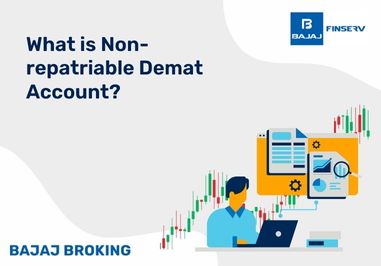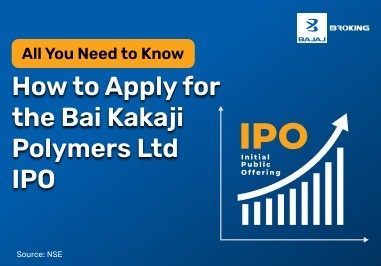A major shift occurred in global trading on July 3, 2023, when the SGX Nifty was officially renamed the GIFT Nifty. Derivative contracts worth $7.5 billion were moved from Singapore to India’s Gujarat International Finance Tec-City, also known as GIFT City. Along with this relocation, the name also changed. What traders once knew as SGX Nifty became GIFT Nifty.
This move marked a significant shift in trading activity from Singapore to India’s National Stock Exchange (NSE) International Exchange (NSE IX) in GIFT City. Through GIFT Nifty, India aimed to enhance its global investor outreach and ensure that these contracts were traded within the country.
The launch of GIFT Nifty marks a major shift in India’s financial market. It brings a fresh perspective to index trading by aligning more closely with the Indian market environment. Let’s break down what GIFT Nifty really means and why it matters for traders and investors. Read on to know all about GIFT Nifty and its transition from SGX Nifty.
Brief History of Nifty and SGX Nifty
Nifty is one of India’s main stock market indices. It represents 50 major companies from various sectors, including IT, banking, and energy, providing a snapshot of the overall performance of the Indian stock market and economy.
SGX Nifty 50 was a futures contract based on this index, but it was traded on the Singapore Exchange (SGX). It acted like an early indicator of how the Indian market might perform when it opened for the day. Although it tracked the same 50 companies, it provided international investors, especially those in Singapore, with a way to trade Indian stocks before the Indian markets officially opened.
What is GIFT Nifty?
GIFT Nifty, short for Gujarat International Finance Tec-City Nifty, is one of the most forward-looking developments in India’s financial sector. It features companies listed on the National Stock Exchange (NSE) and operates from GIFT City in Gujarat, a rising global financial hub.
Investors and market participants could use GIFT Nifty to gain insights into market trends and developments within this international financial hub. Since it operated in line with regular Nifty trading hours, it allowed them to track company performance in GIFT City and make well-informed investment decisions.
GIFT Nifty Takes Centre Stage as SGX Nifty Bows Out
The shift from SGX Nifty to GIFT Nifty was a strategic move in India’s financial market, influenced by several important factors.
One major goal behind the transition was to strengthen India’s market position by bringing Nifty index trading back home. By doing this, India aimed to boost its own financial ecosystem and move closer to becoming a global financial hub.
Regulation was another key reason. Moving the trading of Nifty derivatives to GIFT Nifty allowed Indian regulators to have better control and oversight. This created a more transparent and well-regulated trading environment, which helped build investor trust and protect the market’s stability.
This change also supported India’s broader vision for financial sector development. The international financial centre at GIFT City was designed to attract global investors and expand financial services. Rebranding SGX Nifty as GIFT Nifty aligns with this vision and has helped propel the growth of India’s financial infrastructure.
What is SGX Nifty?
SGX Nifty, short for Singapore Exchange Nifty, was a widely traded futures contract linked to India’s Nifty 50 index. It was available on the Singapore Exchange and allowed global investors to track and trade the movement of the Indian stock market without having to invest directly through Indian exchanges.
How Indian Investors Leveraged SGX Nifty for Global Market Cues?
The transformation of SGX Nifty into GIFT Nifty marked a major milestone in global trading, carrying important implications for India’s economy and stock market. It aligned with GIFT City’s vision to compete with international financial hubs like Dubai, Mauritius, and Singapore.
The CEO of NSE International Exchange called it a “watershed moment” for India, as it brought an international trading contract, previously based outside the country, within India’s borders.
This rebranding was expected to give a strong boost to GIFT City, India’s first international financial centre. The shift to GIFT Nifty attracted a wider range of participants, including Indian firms and members of the Singapore Exchange, helping create a deeper and more liquid trading environment.
Additionally, this move, along with the development of GIFT City, set the stage for future initiatives aimed at connecting Indian capital markets with global investors. Extended trading hours also made it easier for investors in different time zones to access the market.
Source: NSE
Things to know about the GIFT Nifty
Understand how these changes will affect:
1. Introduction of Four GIFT Nifty Contracts
The new GIFT Nifty platform introduced four derivative contracts:
These replaced the contracts previously available under SGX Nifty.
2. Longer Trading Hours
Trading hours were significantly extended, from 4:00 am IST to 2:00 am IST the next day. This allowed for overlap with major global markets in Asia, Europe, and the US, thereby boosting participation across different time zones.
3. New Market Indicator for India
GIFT Nifty took over as the early market indicator for India, replacing SGX Nifty. It began playing a key role in setting the tone and pricing for the Indian stock market.
4. Broader Access for Global Investors
Through the NSE-SGX Connect, international investors gained direct access to Indian capital markets via the NSE International Exchange (NSE IX) in GIFT City, encouraging greater global participation.
5. Smooth Transition for Market Participants
Despite the shift, the trading process remained familiar. Orders were still placed as before, but the backend systems, including order matching, were moved to GIFT City. For most traders, the experience stayed the same.
6. Tax Benefits for Foreign Investors
GIFT Nifty maintained tax neutrality for international players, similar to SGX Nifty. Additionally, non-resident investors benefited from tax perks, including exemptions on capital gains tax, Securities Transaction Tax (STT), and stamp duty, in GIFT City.
7. Equal Partnership Between SGX and NSE
The transition introduced a 50-50 partnership between Singapore Exchange (SGX) and NSE. While SGX handled clearing, the actual trading of futures and options took place on the NSE IX platform in GIFT City.
Conclusion
With the introduction of GIFT Nifty, investors had a unique opportunity to access the Indian equity market through an international financial centre. Backed by world-class infrastructure, sector-specific offerings, and attractive tax benefits, GIFT Nifty held strong potential to attract global capital and support the growth of the Indian economy.














